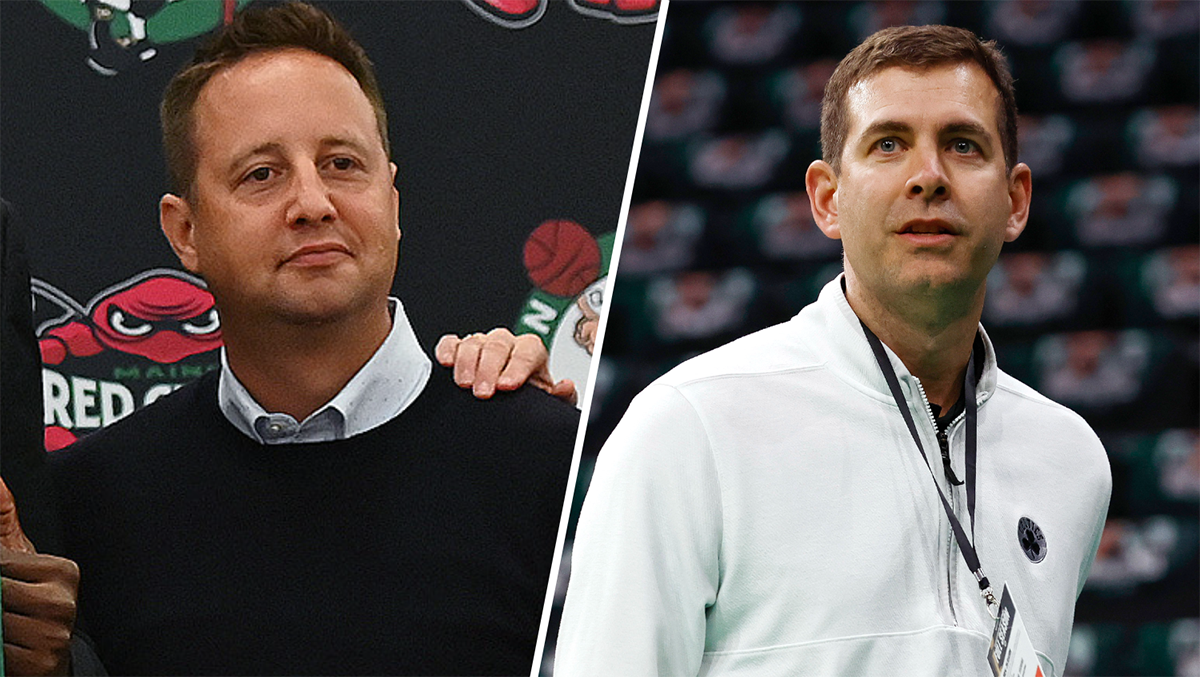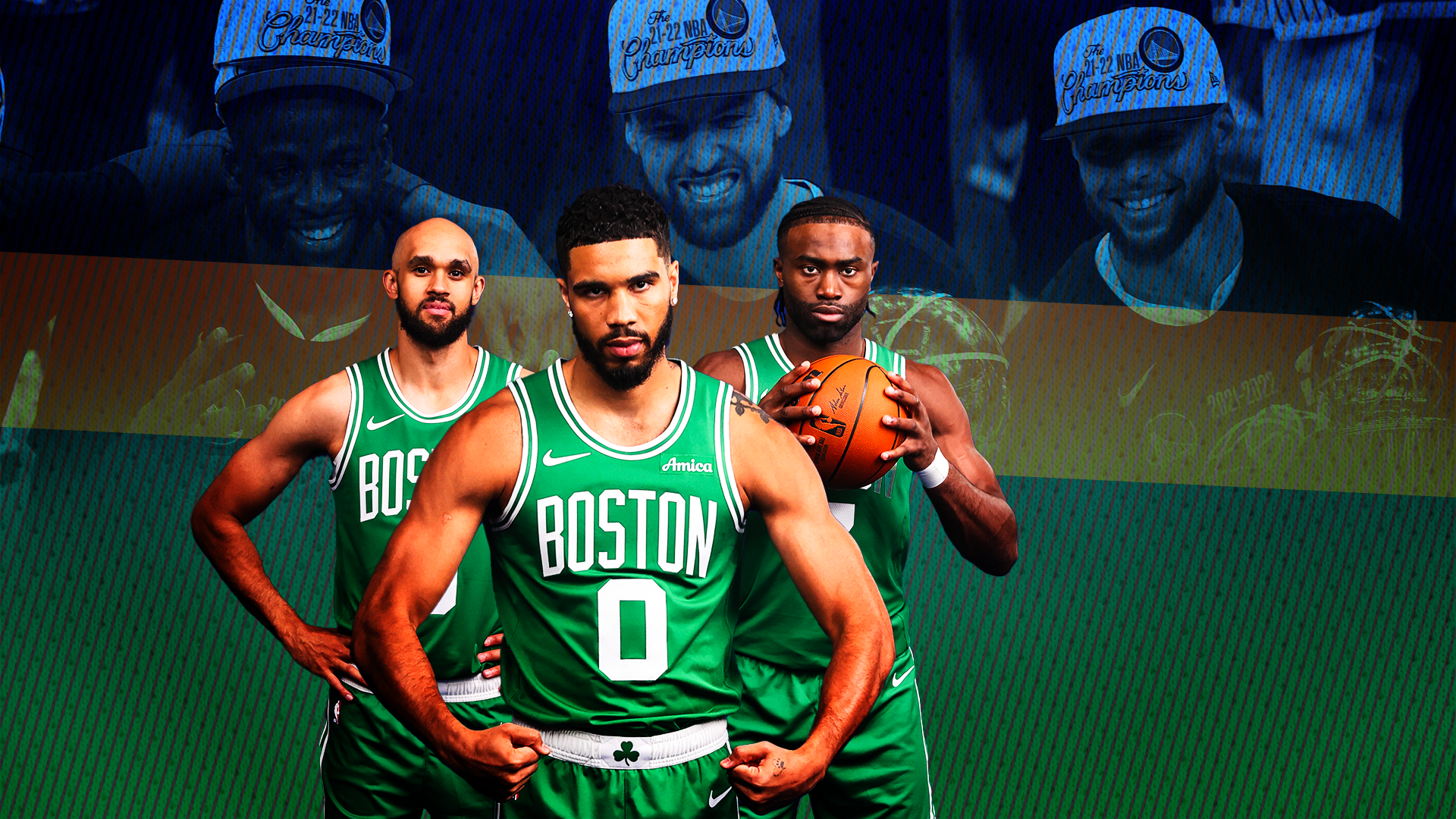There was a sequence early in the second quarter of Game 6 of the Eastern Conference finals that accentuated the difference between the benches of the Celtics and Heat.
Andre Iguodala and Tyler Herro ran a little handoff action on the wing and, as Herro turned the corner after receiving the ball, three Celtics defenders cheated his way in fear of a pull-up jumper. Herro calmly waited for Iguodala to slip free on the baseline and delivered a nifty bounce pass that led to an Iguodala two-handed slam.
The Celtics’ bench so clearly lacked an impact rookie like Herro or a championship-tested veteran like Iguodala this postseason. And the Heat series in particular highlighted Boston’s lack of reliable options in reserve roles.
With our All Access Daily newsletter, stay in the game with the latest updates on your beloved Boston sports teams!
Celtics president of basketball operations Danny Ainge admitted in the aftermath of his team’s playoff exit that the team’s lack of depth was exposed a bit in the postseason but stressed that he didn’t lament the team's lack of in-season moves that could have bolstered the back end of the roster.
Ainge stood pat at both the trade deadline and the buyout market, leading some to suggest that he didn’t truly view his team as a legitimate title contender. Just the opposite, Ainge believed that, at full health, his team had the ability to make a playoff push and fretted the idea of giving up future assets for players that might not have moved the needle much for Boston.
Forsberg: handing out grades for the 2019-20 Celtics
"I don't think I would do anything different,” Ainge said at his season-ending news conference last week. "I think it's a fair assessment of our team that we weren't as strong as we needed to be. I think that we had plenty of depth to get through an Eastern Conference finals, assuming we don't have Gordon [Hayward] and Kemba [Walker] banged up, and Romeo Langford out. So, I don't think we would have done anything different.
Boston Celtics
Find the latest Boston Celtics news, highlights, analysis and more with NBC Sports Boston.
"But I think it's a misconception we didn't make a strong effort to improve our team. And two things, in hindsight, it's a little bit different, too. Had you known you were going to have a training camp in between the trade deadline and before the season, that's probably a better question, if you knew you could bring someone in and have an entire training camp with them before they restarted the playoffs. But I still think the answer would be the same. There's a few guys we were chasing, a few guys we thought we could add to the roster that could really help us, and we weren't able to get those deals done.”
The Celtics were intrigued by Wizards sharpshooting big man Davis Bertans but were skittish of the hefty price tag required for a player on the verge of a big payday this offseason. The counter argument is that, with limited means to house rookies moving forward, the team could have been more aggressive with their picks.
Alas, history suggests this is how teams compromise their future.
Bench shooting will almost certainly be a priority for Ainge this offseason as the Celtics, set to bring back much of their core, will look to improve on the margins. Finding a veteran like Iguodala, who was a negative for the first five games of the East finals, then gave the Heat 15 points on 5-of-5 shooting and was plus-20 in Game 6, could also help a Celtics team overflowing with youth — even if it’s just a veteran voice to steady them.
Celtics Talk Podcast: Breaking down Danny Ainge's end-of-season comments & what's ahead for Celtics | Listen & subscribe | Watch on YouTube
Ainge wouldn’t offer specifics when pressed on what sort of upgrades the team needed to make this offseason but admitted there was some heavy lifting ahead.
“There's some things I'd like to be able to do now, this offseason, to make our team better,” said Ainge. "But we have a lot to do.”
Maybe not as much as in recent years when the roster operated like a turnstile. There’s the very real chance that this roster looks remarkably similar next season and Ainge must make the most of limited means to upgrade.
Ainge’s to-do list starts with the four picks the team has in the 2020 draft, including three first-round selections (Nos. 14, 26, 30). After carrying seven rookies as part of a 17-man roster (when you add in 2-way players), the Celtics have neither the roster space nor the ability to develop four more young players. It seems likely that some of those assets will either be consolidated or pushed into future seasons, whether that’s dealing for future picks or drafting and stashing a young player outside the NBA roster.
The Celtics got limited returns from their rookie class this past season which, again, only spotlighted Herro’s impact after Miami snagged him one spot before Boston was on the clock with their first selection. Langford, tabbed at No. 14, navigated an injury-riddled first pro season and got hurt again 81 seconds into a rare playoff cameo during Game 2 of the East finals. He underwent season-ending thumb surgery soon after.
Forsberg: How C's can improve crunch-time struggles next season
Ainge drew grumbles last week when he insinuated that the team had hoped a healthy Langford could have aided Boston’s bench in the East finals. His larger point was that, if the Celtics had a fully healthy Walker and Hayward playing upwards of 40 minutes in that series, then Boston might have been able to limit the need for bench minutes and Langford could have potentially helped in a small role.
Instead, the Celtics didn’t have reliable options and leaned even heavier on their core, especially Jaylen Brown and Jayson Tatum, all while playoff minutes piled up after a seven-game grind against the Raptors.
A healthy Langford might be able to better showcase his offensive potential next season. Some of Boston’s best bubble minutes featured rookie Grant Williams at small-ball center and his offensive progress could unlock more playing time moving forward.
Still, the Celtics need to hit on their draft picks in the near term, especially as the team’s salary commitment to the top end of the roster explodes with Brown’s rookie extension kicking in for the 2021 season and Jayson Tatum set to ink the biggest contract in Celtics history with his own rookie extension this offseason.
With Ainge admitting the Celtics are prepared to wade into the luxury tax, the team will have only the smaller taxpayer version of the midlevel exception to seek above-the-minimum upgrades in free agency. Maybe much of that will go towards the shooter they desperately need, and maybe a championship-chasing veteran can be hooked on a minimum deal.
It’s harder to see paths to bigger moves. Celtics fans, frustrated by Hayward’s injury woes, will clamor for the team to ponder trade possibilities after he triggers a $34.2 million player option in the final year of his contract. Alas, dealing that sort of salary, particularly with Hayward’s recent injury history, would be difficult to recoup value. The better path might simply be to hope he can stay healthy and get back to being the sort of impact player we saw in spurts before injuries set him back each time.
Forsberg: How can Tatum take next step to NBA superstardom?
The Celtics have tougher decisions to make about their core players if they get into next season and, for whatever reason, they are no longer a true championship contender.
Which players might not be back next season? The Celtics hold a team option on Semi Ojeleye ($1.8 million) and might no longer have the roster space to wait for his offensive development.
The team can extend a qualifying offer to Brad Wanamaker but will have to weigh whether there’s other options at backup point guard.
Javonte Green has a nonguaranteed deal and might be the victim of an overcrowded roster.
Vincent Poirier has to show marked improvement in a short offseason to justify both the roster spot and price tag.
The Celtics have a championship-worthy core but need to find more impactful role players to complement that group. The Miami series showed a bit of what the Boston bench lacked this season.
Now it’s on Ainge to patch those holes.


